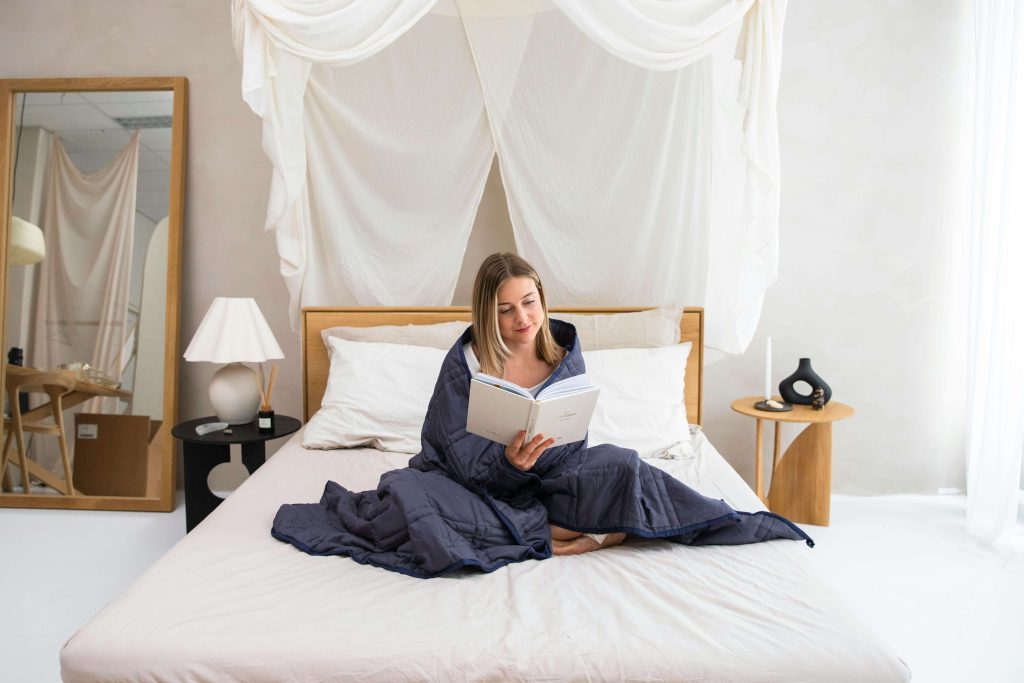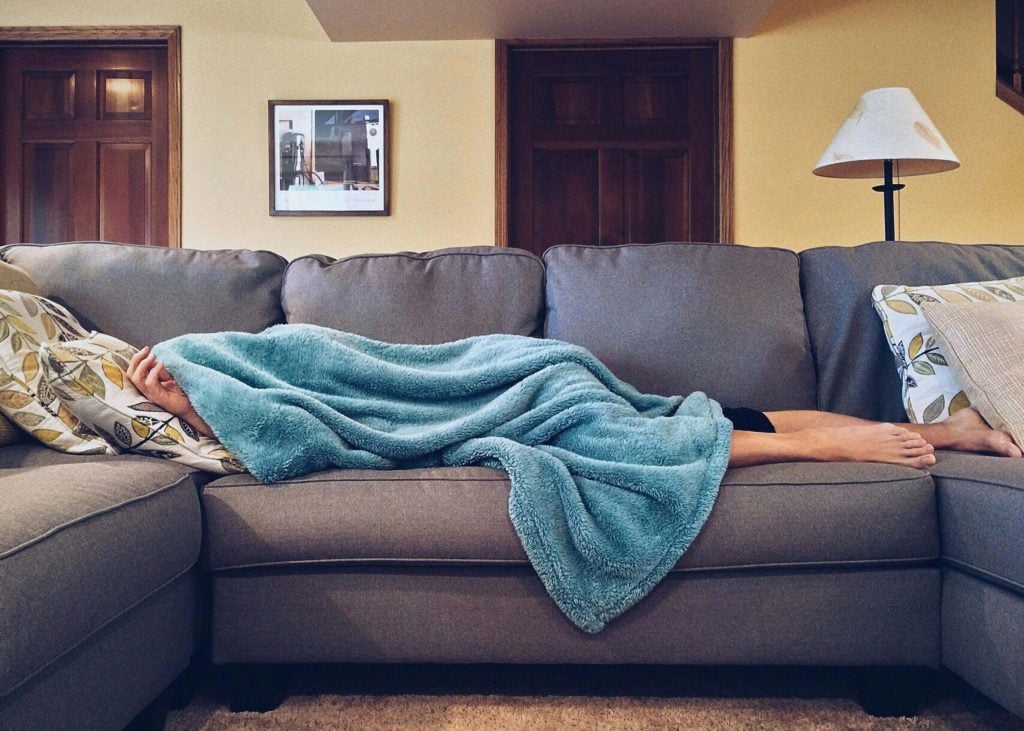Weighted Blankets for Kids with Autism: Are They Worth It?
If you’re parenting an autistic child, chances are someone has suggested a weighted blanket at some point. Maybe it was your child’s occupational therapist or maybe it came up in a Facebook group or during a conversation with another parent. It might have even popped up in your social feed, packaged as a must-have for sensory support.
And yet, even with all the buzz, you’re left wondering…is this really going to help my child? Or is it just another thing people say I should try?
That question is valid because while weighted blankets can absolutely be helpful, the truth is that they’re not a great option for every child. I don’t believe in one-size-fits-all solutions, especially when it comes to supporting kids with unique sensory and emotional needs. What I do believe in is helping families figure out what works for their child, which includes knowing what signs to look for, what red flags to notice, and how to try things out in a low-pressure, meaningful way.
In this post, you’ll find:
- A clear explanation of how weighted blankets actually work
- Specific ways they might help some autistic children regulate
- When to consider weighted blankets for kids with autism
- Gentle ways to try one without pressure or overwhelm
- Signs that a weighted blanket may not be the right fit and alternatives to consider

What Is a Weighted Blanket and Why Are They Recommended?
If you’ve ever felt comforted by a firm hug or the coziness of a heavy comforter, you’ve already experienced a version of what makes weighted blankets helpful. These blankets are intentionally designed to provide deep pressure stimulation (DPS), a calming, grounding sensation that can help regulate the nervous system.
DPS works by gently activating the parasympathetic nervous system, often called the “rest and digest” system. When this part of the nervous system is engaged, the body starts to move out of a stress response and into a more regulated, relaxed state. For many children with autism, that sense of calm can be hard to access without some kind of support. This is where a therapeutic weighted blanket or even a weighted stuffed animal may be useful.
Some research suggests that deep pressure input may also support the release of serotonin and dopamine, neurotransmitters that help regulate mood, attention, and emotional well-being. While every child is different, many families find that a weighted blanket for special needs children can be a helpful part of a broader sensory support plan.
This is why you’ll often hear terms like ASD weighted blanket or therapeutic weighted blanket. These products are marketed not just for comfort, but because they can offer a calming effect for children who are easily overstimulated or who struggle with emotional regulation.
If you want to learn more about supporting sensory needs, a post on auditory sensitivity strategies is coming soon.
Why a Weighted Blanket Might Help Some Autistic Kids
Weighted blankets aren’t a cure-all, but they can be a supportive tool for some autistic children, especially when used as part of a broader plan for sensory and emotional regulation.
Here are a few ways families have found them helpful:
- Calming the nervous system before sleep: for children who have trouble winding down at night, a weighted blanket can offer consistent, soothing input that helps signal to the body it’s time to rest. The gentle pressure may reduce bedtime anxiety and promote more restful sleep.
- Reducing restlessness and nighttime anxiety: some kids benefit from the steady, contained feeling of a weighted blanket, which can reduce the urge to toss and turn or get out of bed.
- Providing grounding input during transitions or meltdowns: when the world feels overwhelming, deep pressure can offer a sense of containment and safety. Some families find this especially helpful during intense moments, particularly when trying to differentiate between a sensory meltdown and an autistic shutdown.
- Supporting regulation after autistic shutdowns: after a shutdown, some children feel numb, disconnected, or exhausted. A weighted blanket may offer just enough sensory input to help them feel more centered without requiring interaction or decision-making. If your child seems to linger in shutdown mode for longer stretches, it may be worth learning more about what that can look like and what supports might help.
The science behind these benefits is still emerging, but studies like this one on sleep and weighted blankets and this review of sensory-based interventions in autism suggest that deep pressure input can be calming and may support regulation for some children on the spectrum.

Every child responds differently. What feels supportive to one child may feel overwhelming to another. That’s why it’s important to observe your child’s reactions and use tools like these with intention and flexibility.
When It Might Not Be the Right Fit
Just like any other tool, a weighted blanket won’t be the right match for every child. In some cases, it may even add stress rather than provide comfort.
Some things to consider:
- Sensory preferences vary. If your child tends to avoid certain kinds of touch or pressure, a weighted blanket might feel restrictive or irritating instead of calming. This is especially true for kids who are more sensory avoidant.
- It can cause overheating. Many weighted blankets are made with heavy, heat-retaining materials. If your child runs warm, kicks off covers, or gets uncomfortable easily at night, a weighted blanket could make sleep harder rather than easier.
- Discomfort isn’t always easy to communicate. Some children may not be able to explain that the blanket doesn’t feel good, especially if they’re non-speaking or have limited language. If they seem more dysregulated after using the blanket, it’s worth pausing and observing.
- It may backfire if it feels like a “strategy.” Sometimes, using a blanket as a go-to regulation tool can feel more like a demand than a comfort, especially if your child is already overwhelmed. In those moments, emotional co-regulation with a trusted adult or peer might feel safer than a sensory input like pressure.
Weighted blankets are most helpful when they’re offered as an option, not enforced as a fix. If a child shows hesitation or distress, that’s important information. It might mean trying a different sensory support or returning to co-regulation and connection first, which are foundational parts of emotional development in early childhood.
Whether you decide to try a weighted blanket now, later, or not at all, the goal is to choose what actually supports your child’s regulation, comfort, and well-being.
A Decision-Making Framework That Actually Helps
If you’re unsure whether a weighted blanket is right for your child, you’re not the only one. Instead of feeling pressured to act quickly based on a product description or what others are doing, it can be helpful to slow down and reflect on a few key questions.
My approach is a little different from most. I don’t believe the answer is simply yes, use one, or no, don’t. I believe the answer depends on the child. What I want to do is help you understand what to look for so you can make the choice that feels right for your family.
Here are some questions to answer when making this decision:
- Is my child more sensory-seeking or sensory-avoidant? Children who enjoy hugs, deep pressure, or tight spaces may respond well to the sensation of a weighted blanket. If your child tends to avoid touch or prefers very light, loose clothing, they might find a weighted blanket uncomfortable.
- When does my child seem most dysregulated? Pay attention to patterns. Is it bedtime, after school, or during transitions between activities? Understanding when your child struggles the most can help you decide whether a weighted blanket might be useful during those times.
- Have we tried similar tools before? If your child has shown interest in a weighted stuffed animal, lap pad, or similar item, that may be a good sign that they will respond well to the pressure of a blanket. These smaller supports can also be a low-risk way to test whether this type of input feels calming.

Trying it Without the Pressure (Literally and Figuratively)
Trying It Without the Pressure (Literally and Figuratively) If you decide to give a weighted blanket a try, it doesn’t have to be all or nothing. In fact, one of the best ways to introduce it is slowly and without pressure, both in terms of the physical weight and the expectations around how it should be used. Here are a few ways to get started in a way that feels respectful and supportive:
- Start small. You might begin by placing the blanket across your child’s lap during a calming activity, like reading or watching a favorite show. This allows them to feel the pressure in a low-stakes moment, without expecting them to sleep under it right away.
- Let them see others using it. Some children are more open to trying something when they see a sibling, parent, or trusted adult using it first. Modeling curiosity and comfort can go a long way.
- Give them space to explore. Rather than presenting it as a tool they have to use, allow your child to interact with it in their own way. They might sit on it, wrap it around their shoulders, or just touch it briefly and walk away. All of that is okay.
How to Tell If It’s Helping
Once your child starts using a weighted blanket, the next step is noticing how their body and behavior respond. You don’t need a checklist or a chart (unless you want to!) Just keep an eye out for subtle changes that suggest the blanket is having a positive impact.
Some signs it may be helpful include:
- Falling asleep more easily. If your child typically takes a long time to settle down at night but begins falling asleep more quickly, that could be a sign the blanket is helping their body and brain transition into rest mode.
- More regulated body language. You might notice less fidgeting, more stillness, or a calmer posture when they’re using the blanket.
- Choosing to use it on their own. If your child begins asking for the blanket, pulling it over themselves without prompting, or keeping it nearby during quiet time, that can be a meaningful sign that it feels good to them.
Just like with any sensory support, effectiveness looks different for every child. The goal is not perfection, but progress: more ease, more comfort, and more moments of calm in their day.
What to Try If It’s Not the Right Fit
If your child doesn’t seem to enjoy the blanket, that just means their sensory system may need something different. Thankfully, there are many ways to offer calming input without the weight of a blanket.
You might try:
- A weighted stuffed animal or lap pad. These offer similar benefits with more flexibility and less intensity.
- Compression clothing. Some children prefer the steady pressure of compression shirts or leggings instead of the full-body sensation of a blanket.
- Movement-based regulation. Rhythmic movement, like swinging, jumping, or slow, heavy work, can be just as calming as stillness for some kids.
- Fidget tools and sound supports. Depending on your child’s needs, tactile input or soothing sound can also play a big role in helping them stay regulated. If you’re curious about tools like this, you might want to read more about whether fidget toys are good for autism or check out some auditory sensitivity strategies that families have found helpful.
Final Thoughts: It’s About the Fit, Not the Hype
It’s easy to feel like you have to try every single tool that gets recommended. Weighted blankets, sensory swings, fidget kits, the list can feel endless. But here’s the truth: a weighted blanket is just that: a tool.
What matters most is fit. Does it seem to support your child’s regulation? Do they reach for it when they need comfort or calm? Are there signs, even small ones, that it’s making their day just a little easier? If yes, it might be worth keeping around. If not, that’s okay too.
I think it’s also worth noting that sensory preferences are personal and that they can shift over time. A child who avoids deep pressure now might seek it out later. One who loves a weighted blanket this year might outgrow it next year. Staying curious and paying attention to how your child responds will serve you more than any checklist ever could.
Regulation is a layered process. There’s rarely one strategy that works in every moment or for every child, and that’s why I’m building this library of resources. If you’ve found this post helpful, you might also enjoy other posts in the sensory and emotional regulation collection, where I share strategies that are practical, flexible, and designed to support real families.
If you want to stay connected as I continue adding new content, consider subscribing to the blog to follow along for updates and resources that meet you where you are.







